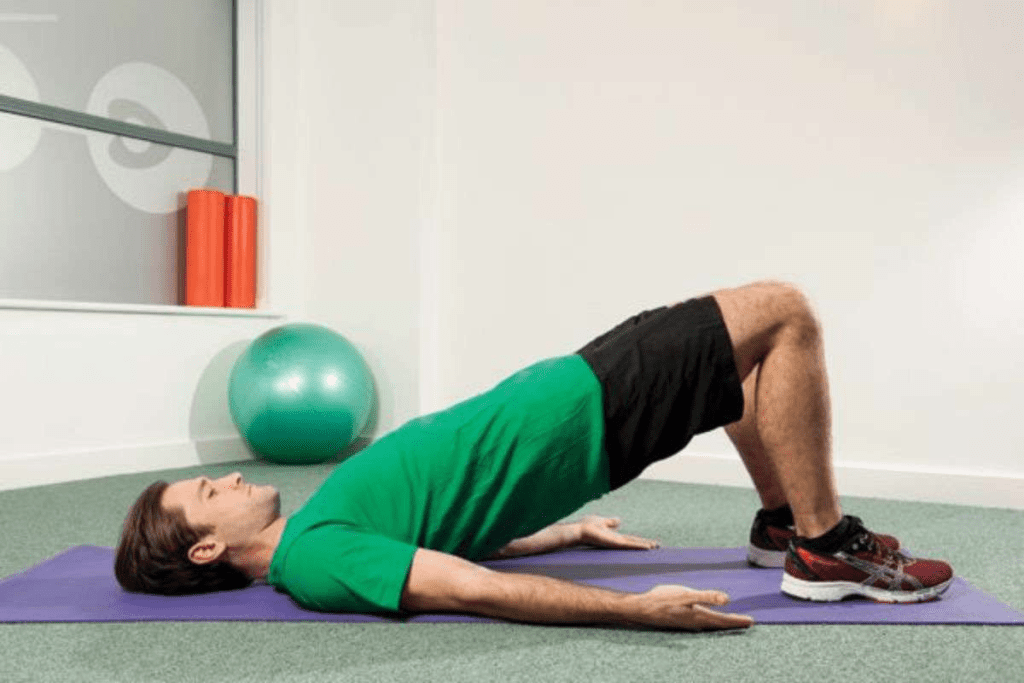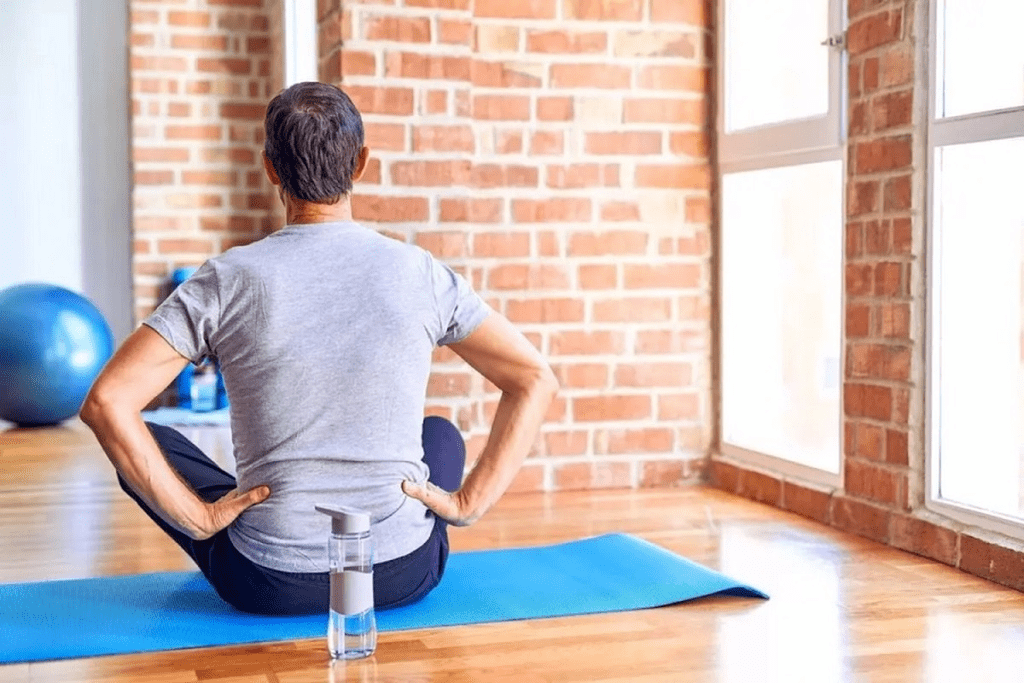Last Updated on October 31, 2025 by

Strengthening your bladder through regular exercises can greatly improve your life. It helps reduce urinary incontinence. This is very important for women who deal with stress incontinence.
Kegel exercises are a top choice for making pelvic floor muscles stronger. These muscles are key for bladder control. By doing these exercises daily and getting help, you can stop or lessen urinary leaks and other pelvic floor issues.
Many women struggle with bladder control problems. It’s important to know why this happens to manage it well. We’ll look at why bladder weakness is common and why pelvic floor exercises are key.
Factors like pregnancy, childbirth, and aging often lead to bladder problems. Pregnancy puts pressure on the bladder, and childbirth weakens pelvic muscles. Menopause also plays a role, as estrogen levels drop.
Other causes include surgery and being overweight. These can also weaken pelvic muscles.

Pelvic floor issues are common among women. Over 60% of women face problems like urinary incontinence or pelvic organ prolapse. These issues can greatly affect a woman’s life.
Knowing how common pelvic floor problems are is important. It helps us find better ways to help women with these issues.
Kegel exercises are a simple yet powerful tool for improving bladder control and pelvic health. They help strengthen the pelvic floor muscles. This can greatly reduce urinary incontinence and enhance your quality of life.
Finding the right muscles for Kegel exercises is key. To locate them, try stopping urine flow midstream. The muscles you use are your pelvic floor muscles. Remember, don’t make a habit of stopping urine flow as it can cause urinary retention issues. Instead, practice contracting these muscles during exercises.

To do Kegel exercises right, follow these steps:
Consistency is key for Kegel exercises. Regular practice will strengthen your pelvic floor muscles over time.
To see big improvements in bladder control, follow an 8-12 week Kegel exercise routine. Begin with manageable sessions and increase them as your muscles get stronger.
Here’s a sample routine:
By sticking to this routine and using the right technique, you can strengthen your pelvic floor muscles. This will improve your bladder control.
Yoga is a great way for women to fight urinary incontinence. It helps strengthen the pelvic floor muscles. This can lead to better bladder control and pelvic health.
Women aged 45“90 who did low-impact yoga for 12 weeks saw a 65% drop in incontinence. This shows yoga can be a good, non-invasive way to manage incontinence. Yoga not only strengthens the pelvic floor but also boosts physical and mental health.
Some yoga poses are better than others for fighting incontinence. Here are five low-impact poses that help:
To get the most from yoga for incontinence, create a 12-week plan. Include the best poses, starting slow and getting harder. Consistency is key; regular practice will show real results in bladder strength and pelvic health.
Adding yoga to your life can help manage incontinence. It strengthens the pelvic floor and improves bladder control. This can greatly improve your quality of life.
There’s more to improving bladder control than just Kegels. A mix of exercises can boost pelvic health. Adding other muscle conditioning exercises can lead to better results.
Core exercises are key to pelvic support. A strong core stabilizes the body and eases pelvic muscle strain. Planks, bridges, and pelvic tilts are great options.
Planks, for instance, work the entire core, supporting the pelvic floor. Start in a push-up position, hands shoulder-width apart. Hold for 30-60 seconds, doing 3-4 sets.
Hip and lower back exercises are vital for pelvic health. These muscles are connected to the pelvic floor. Strengthening them can improve bladder control and prevent disorders.
Squats, lunges, and leg raises target the hips. Bridges and pelvic tilts focus on the lower back. Adding these to your routine supports the pelvic floor well.
Using a variety of exercises is best for a strong pelvic floor. Mix core, hip, and lower back exercises with physical activity. This approach strengthens the pelvic floor.
A balanced routine might include Kegels, planks, bridges, and squats. Start with Kegels, then do planks and bridges. Finish with squats and lunges.
By focusing on pelvic floor health, women can better control their bladders. They also reduce the risk of disorders and improve their overall well-being.
Getting help from professionals is key to treating stress incontinence. It can really affect your daily life and happiness. So, it’s important to talk to healthcare experts.
If you have stress incontinence symptoms, seeing a physical therapist is a good step. They can help with pelvic floor training. This strengthens the muscles that help control your bladder. The American Urological Association says physical therapy is a top treatment for this issue.
See a physical therapist if you:
A physical therapist will teach you exercises that fit your needs during supervised training. This helps you find and strengthen the right muscles. It also makes sure you’re doing the exercises right.
Benefits of this training include:
“Supervised pelvic floor training can significantly improve symptoms of stress incontinence by ensuring that patients perform exercises correctly and effectively.” – Expert Opinion
For serious cases, you might need more advanced treatments. These could be surgery, medication, or other special treatments. A doctor will look at how bad your condition is and suggest the best treatment.
Advanced treatments are for when:
We think a team of healthcare experts is best. They work together to give you the best care for your needs.
Improving bladder health needs a mix of pelvic floor exercises and professional help. Doing Kegel exercises and yoga regularly can help a lot. These steps can lower the chance of urinary incontinence and boost your health.
At Liv Hospital, we know how key it is to treat bladder health fully. Our team uses the latest medical methods to help patients. With Kegels, yoga, and expert advice, people can get better bladder health and live better lives.
We urge everyone to work on their bladder health. The right mix of exercises and medical care can handle urinary incontinence well. For top-notch treatments and support, Liv Hospital is here to help with care and skill.
Kegel exercises strengthen the muscles that support the bladder. This helps improve bladder control and reduce urinary incontinence.
Try stopping urine flow mid-stream or tightening muscles to prevent passing gas. A healthcare professional can also guide you.
Aim for an 8-12 week routine for best results. Consistency and correct technique are key.
Yes, yoga can significantly reduce urinary incontinence. Studies show a 65% reduction in episodes.
Low-impact poses like downward-facing dog, warrior, and tree pose target the pelvic floor. They help improve bladder strength.
Yes, exercises like core strengthening, hip, and lower back exercises also improve pelvic health. They help with bladder control.
If stress incontinence persists or worsens, see a physical therapist. They can provide supervised training and guidance.
A physical therapist will assess your muscles and guide you on exercises. They’ll also monitor your progress.
For severe cases, advanced treatments include multidisciplinary care. This may involve surgery or other interventions.
Practice Kegels regularly, ideally at the same time each day. Seek guidance from a healthcare professional if needed.
Subscribe to our e-newsletter to stay informed about the latest innovations in the world of health and exclusive offers!